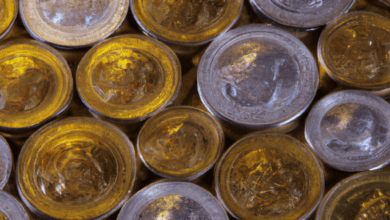Understanding Industrial Metals: Applications, Trading Insights, and Sustainable Practices for Aluminum, Copper, and Zinc

In today's rapidly evolving industrial landscape, the significance of industrial metals cannot be overstated. Metals such as aluminum, copper, and zinc play pivotal roles across various sectors, from construction and automotive manufacturing to aerospace and energy production. These non-ferrous and ferrous metals are not only essential for traditional applications but are also increasingly integral to innovative technologies, including 3D printing and battery production. As we explore the applications of these metals, we will delve into their diverse roles in modern industries, highlighting their importance in metal fabrication and construction.
Moreover, the trading landscape of industrial metals has become a dynamic arena, influenced by global demand, economic trends, and the rise of sustainable practices. Understanding the market for base metals, precious metals, and the burgeoning field of metal recycling is crucial for investors and industry stakeholders alike. With a focus on innovations in metallurgy and sustainable metal production, we will also examine how these developments are shaping the future of metal commodities and metal mining.
Join us as we navigate the intricate world of industrial metals, uncovering the trends and insights that define their applications and trading, while also considering the pressing need for sustainable practices in this essential sector.
- 1. Applications of Industrial Metals: Exploring the Roles of Aluminum, Copper, and Zinc in Modern Industries
- 2. The Trading Landscape of Industrial Metals: Insights into Base Metals and Precious Metals Markets
- 3. Sustainable Metal Production and Recycling: Innovations in Metallurgy and the Future of Metal Commodities
1. Applications of Industrial Metals: Exploring the Roles of Aluminum, Copper, and Zinc in Modern Industries
Industrial metals play a crucial role in various sectors, driven by their unique properties and versatility. Among the most prominent industrial metals are aluminum, copper, and zinc, each contributing significantly to modern industries.
Aluminum, known for its lightweight yet strong characteristics, is widely utilized in construction metals and automotive manufacturing. Its resistance to corrosion makes it ideal for outdoor applications, including building facades and roofing materials. Additionally, aluminum is increasingly used in aerospace metals due to its excellent strength-to-weight ratio, enhancing fuel efficiency in aircraft. The growing trend towards sustainable metal production has also led to the increased recycling of aluminum, further emphasizing its importance in the circular economy.
Copper, another vital industrial metal, is renowned for its excellent electrical conductivity, making it indispensable in electrical wiring and electronic components. It is a key component in energy metals, especially in renewable energy systems like solar panels and wind turbines. Furthermore, copper's antimicrobial properties lead to its use in plumbing and medical applications, showcasing its diverse utility. The demand for copper continues to rise as industries shift towards more sustainable practices, including metal recycling processes that recover valuable materials from scrap.
Zinc, often found in metal alloys, serves primarily as a corrosion-resistant coating for steel, significantly prolonging the lifespan of construction metals and automotive parts. Its application in galvanization protects ferrous metals from rust, making it essential for the automotive and construction industries. Moreover, zinc is utilized in battery production, particularly in the development of energy storage solutions, aligning with the trends in battery metals and sustainable energy technologies.
In summary, aluminum, copper, and zinc are integral to various modern industries, from construction and automotive to energy and electronics. As the demand for sustainable practices and innovative applications grows, the roles of these industrial metals are set to expand, underscoring their importance in the evolving landscape of metallurgy and metal commodities.
2. The Trading Landscape of Industrial Metals: Insights into Base Metals and Precious Metals Markets
The trading landscape of industrial metals is a dynamic arena influenced by various factors including market demand, production levels, and global economic conditions. Industrial metals, primarily categorized as base metals and precious metals, play critical roles across multiple industries such as construction, automotive, energy, and aerospace.
Base metals, including aluminum, copper, zinc, and steel, are essential for a vast array of applications. For instance, copper is extensively used in electrical wiring and plumbing due to its excellent conductivity and resistance to corrosion. Aluminum, valued for its lightweight and strength, is a staple in construction and automotive sectors. The trading of these metals is often driven by their demand in manufacturing and infrastructure projects.
On the other hand, precious metals like platinum, palladium, and gold are typically seen as investment assets. Gold investing and silver investing have historically been regarded as safe havens during economic uncertainty. These metals also have significant applications in jewelry and electronics, where their conductivity and aesthetic appeal come into play.
The landscape is further complicated by the rise of sustainable metal production practices. As industries strive for greener solutions, the focus on metal recycling and the responsible sourcing of rare earth metals has increased. This trend not only influences market prices but also shapes the strategies of metal mining operations and metallurgy processes.
Moreover, the emergence of new technologies such as 3D printing metals is reshaping the future of metal fabrication. This innovation allows for greater customization and efficiency in manufacturing, making it an attractive option for companies within the industrial metals sector.
As the market evolves, key metal trends such as the growing demand for battery metals like lithium for electric vehicles are transforming the trading landscape. Investors and traders must stay informed about these shifts, as they can significantly impact the prices and availability of various metal commodities.
In conclusion, understanding the trading landscape of industrial metals requires a comprehensive view of both base and precious metals markets. Keeping abreast of trends, market demands, and sustainable practices will be crucial for anyone involved in metal trading or investment.
3. Sustainable Metal Production and Recycling: Innovations in Metallurgy and the Future of Metal Commodities
Sustainable metal production and recycling are becoming increasingly vital in the face of growing environmental concerns and resource scarcity. Innovations in metallurgy are paving the way for a more sustainable future for both industrial and precious metals. As the demand for metals like aluminum, copper, and zinc continues to rise across various sectors—including construction, automotive, aerospace, and energy—there is an urgent need to adopt sustainable practices in metal mining and production.
One of the key advancements in sustainable metal production is the development of more efficient extraction and processing techniques. These innovations reduce energy consumption and minimize metal corrosion during processing, contributing to a lower carbon footprint. For example, the use of hydrometallurgy, which employs aqueous solutions to extract metals, is gaining traction as a more environmentally friendly alternative to traditional pyrometallurgical methods. This technique is particularly useful for non-ferrous metals like copper and zinc, allowing for better recovery rates and less waste.
Metal recycling is another critical component of sustainable practices. The recycling of base metals, such as aluminum, copper, and steel, not only conserves natural resources but also significantly lowers greenhouse gas emissions compared to virgin metal production. The recycling process for metals is highly efficient, with aluminum recycling requiring up to 95% less energy than primary production. This efficiency is essential in the context of rising metal prices and the increasing emphasis on circular economy principles.
Moreover, the rise of 3D printing metals is transforming the landscape of metal fabrication. This innovative technology allows for the production of complex components with minimal waste, enabling manufacturers to use metal alloys more efficiently. As the industry shifts toward additive manufacturing, it fosters a more sustainable approach to metal commodities, reducing the reliance on traditional metal mining.
The future of metal commodities also hinges on the development of battery metals, such as lithium and cobalt, which are crucial for renewable energy technologies and electric vehicles. As global demand for these energy metals grows, so does the importance of sustainable mining practices and responsible sourcing to mitigate the environmental impact.
In conclusion, the shift toward sustainable metal production and recycling is essential for the future of the metal industry. Innovations in metallurgy, coupled with advancements in recycling and 3D printing technologies, are paving the way for a more sustainable approach to industrial and precious metals. As we look to the future, the integration of these practices will not only enhance resource efficiency but also ensure that the metal trends of tomorrow align with environmental goals.
In conclusion, industrial metals such as aluminum, copper, and zinc play a critical role in various modern industries, from construction and automotive to aerospace and energy sectors. Understanding the applications of these metals helps us appreciate their significance in driving technological advancements and supporting sustainable development. As we explored the trading landscape of industrial metals, it becomes evident that both base metals and precious metals markets offer unique opportunities for investors, including gold and silver investing, while reflecting current market trends.
Moreover, the focus on sustainable metal production and innovative recycling methods highlights the importance of responsible practices in metal mining and metallurgy. With the growing demand for metals like lithium, platinum, and palladium for applications in battery technologies and 3D printing, the future of metal commodities looks promising yet challenging.
As industries continue to evolve, staying informed about metal trends and the advancements in metal fabrication will be essential for stakeholders in the sector. By prioritizing metal recycling and embracing new technologies, we can ensure a sustainable future for industrial metals while minimizing the impact of metal corrosion and waste. Ultimately, the interplay between industrial and precious metals will shape the economic landscape and influence investment strategies for years to come.
References:
(Include relevant citations here)





